Skin Deep(er)
Understanding Site Specific Performance.
Blast Theory.
Blast Theory are based In Brighton, I instinctively searched for their name on a search engine and came across their website. Their documentation is fantastic; I was able to access a steak peak/snippet of the majority of their performances. The main ones that stood out to me were Rider Spoke (2007) and Fixing Point (2011).
Rider Spoke.
“This is one of those moments when you’re on your own, you might feel a little odd at first, a bit self-conscious or a bit awkward, but you’re alright, it is okay.” (Blast Theory, Rider Spoke. 2007)
“Rider Spoke was first shown at the Barbican in London in October 2007 and has since been presented in Athens, Brighton, Budapest, Sydney and Adelaide.” (Blast Theory, Rider Spoke. 2007)
Rider Spoke had the audience ride through the city on bicycles and equips with a handheld computer that they can record messages on. The audience then finds various ‘hiding places’ and records an answer to the questions that the computer has asked them. The handheld computer also sets the audience various tasks, such as finding a stranger that catches their eye, and to watch/follow them. This piece is entirely dependent on the audience; and “this sets the stage for a very personal and intimate form of participation”. (Blast Theory, Rider Spoke. 2007) with the use of technology and an informal setting it really makes the audiences aware of their surrounding as they have to seek out certain places to uncover or eavesdrop on other peoples recordings. This piece asks you a question alone, to reflect on your life. If you find the hiding place of another audience member, the device allows you to listen to their personal answer.
You can watch the video here – http://www.blasttheory.co.uk/projects/rider-spoke/
Fixing Point.
“I believe there is a real willingness there on behalf of the INLA (Irish National Liberation Army), they want to find him as much as we do.” (Blast Theory, Fixing Point. 2011)
This sets the audience off with a smartphone and a pair of headphones. They then listen to an interview by Anne Morgan about her brother Seamus Ruddy, who was killed in 1985 by “members of the Irish National Liberation Army in Paris” (Blast Theory, Fixing Point. 2011) The audience has to follow a map to uncover various ‘fixing points’ in the ground throughout the wooded area, to unlock another part of the interview. Anne Morgan gives a heartbreaking interview of how her brother body was never found. Blast Theory first showed this piece in Suffolk, an area with a strong Military Background.
You can watch the video here – http://www.blasttheory.co.uk/projects/fixing-point/
Blast Theory uses the contemporary mix of technology and uncovering certain sites in order to tell or create a story. Their pieces rely on audience participation and use simple but effective methods to display their performances. They choose their location wisely, and this is obvious with ‘Fixing Point’ as they choose and area with a strong history of military activity.
Analysis of Process
Entering The Usher Gallery and The Collection
I’ve always appreciated art in the sense that it’s pretty to look at, or it’s interesting, but I’ve never taken the time to figure out my own interpretation on a piece. I suppose people can relate to art just how they would to a performance, they may come away with different meanings or their focus may not of been entirely the same as other audience members, that’s the beauty of it our perceptions are completely individual. I kept an open mind and we had a chance to explore the space as well as looking at the historic pieces and the ‘Viewpoints’ exhibition. I learnt the process of how the gallery brings in new pieces and the idea of that they’re preserving history, and slowly due to technology and other advancements we won’t have that in the future. It would be wrong for me to not appreciate art right now or pieces of history, as it’s dying out.
As a group, we were all quite similar in the sense we didn’t regularly visit art galleries, or know that much about artists etc. So we were surprised by how little we felt The Usher Gallery and The Collection showed the true history of Lincoln. There were very few female artists. The majority if not all the paintings featuring female bodies were painted by middle-aged men. The pieces in The Collection such as the jewellery, or the cutlery didn’t represent anything to us by the people who had used them, it didn’t tell us anything about the people. We wanted personality, and we decided that our piece should feature personalised bodies that represent a true society, which spectators can perhaps more easily relate to.
We originally wanted to perform in a large room in the Usher Gallery. We then changed our minds when we rehearsed in a much smaller room, and we then grew to like the intimacy it created. The artwork in our new room, was featuring objects, and didn’t appear to have a ‘theme’, we felt this would echo our piece better.
Our intial pitch was heavily influenced by Marina Abramovic and ideas of the human body as pieces of art was on reflection perhaps too simple. We originally wanted Five bodies, who would get changed into different outfits, but we would be blindfolded. We would then have a form of questionnaire in a book in front of the bodies that would ask the general public to make assumptions on our sexuality, if we’re good people etc. From the start we’ve wanted to create a piece of performative art that expressed personality, and depth to them. As a female, looking at the various paintings in The Usher Gallery I was surprised by how much I disliked them. I’m sure in the world of art they’re considered very tasteful. But a piece of art showing a female body that was created by a man, displeases me. As a group we tried to work out what we’d want to know about the women featured in these paintings, and not just focus on her female form. This inspired me to sexualise my body for The Fetished Body of our performance. I wanted to show my sexuality, and how I feel being in my female form, but it’s in my control.
I wanted to create a sexualised female, by a female.
Performance
Blurb – Fetishised, Masculine, Meditative, Unusual, Queer. Five vessels used to explore their own identities and those imposed upon them. We invite you to come and observe this silent journey of self-discovery.
Framing Statement – A performative piece of art with five performers that explores identity under the constraints of social conventions, by forming their own appearance and having it altered by the other bodies, exploring the way in which the site manipulates and influences people’s perceptions of identity.
Our performative piece called Skin Deep(er) was focused on five bodies in a room, each body started in black plain underwear. Not moving, nor speaking. Every 3 minutes the bodies would move in sync with one another and put on a piece of clothing, that would build up into their persona. Once each of the five bodies were fully dressed, they were then manipulated into a position by the body to the left of them. Once all the bodies were manipulated, we help this position, and then simultaneously sat down and began arranging our personal space/enclosure with belongings. Once the enclosure was built, the five bodies each performed unique tablos to their persona.
The Fetished Body:
Stockings
Suspender Belt
Heels
Ball Gag
Flog Whip
Vibrator/Dildo
Underwear
Handcuffs
Condoms
Lube
Magazine about female physique
The tablos were performed for approximately five minutes, and we motioned spectators to come closer to our enclosed space, as we passed them a confession card. Each card was unique to each persona;
The Fetished Body
“Fuck you, guys—you wanna see pussy. I’ll show you pussy.” – Annie Sprinkle
I lost my virginity because I was taunted at school for being a virgin.
The penis intimidates me.
My tablo consisted flogging myself with a sex toy, and allowing my body to be broadcasted in a sexualised manner. Once the tablos had been performed, the bodies knelt back down and cleared away the enclosure objects back into a box. Then every 3 minutes we removed one piece of our clothing, until we were back to our original form of just black underwear. We then repeated the process.
Rehearsal Process.
Our rehearsal process as a group consisted of rehearsing a choreographed piece so the dressing and undressing didn’t appear messy or comical. We then focused our attention on the manipulation of each body, we wanted this to be forceful. Our individual tablos took the most of our rehearsal time as we individual had to choreograph a routine that broadcasts each persona. The persona had to be a strong performative piece, and so every movement had to show this. We researched various performative artists to gather influence and ideas. To also help embody our persona more we worked on exercises from the Pocha Nostra book. The book instructed us to mark one end of the room 1 (meaning strongly disagree) and the other end of the room 10 (strongly agree) so the room was to represent a sliding scale. We then answered questions directly from the book, based on our persona. The questions included views on;
Sexual liberation
Patriotic
Cultural diversity
Religion
Politics
Sexual Promiscuous
We then moved up and down the room answering each question with a number on how we felt best represented our answer. This helped us further develop our persona further.
Influences.
MARINA ABRAMOVIĆ – The Artist is Present.
“Through her and with her, boundaries are crossed, consciousness expanded, and art as we know it is reborn.” (Marina Film. 2012). Marina redefined our conception of the limits that performative art could take. Her unique work ethic, and the lengths in which she trained herself for various performances inspired our piece called Skin Deep(er). We wanted to create a piece that was completely out of our comfort zone and use our bodies as the art form. We wanted to communication between us as the performers and the spectator, except for the notes that we passed through, this was our way of showing that small sense of secrecy and intimacy, which mirrored the emotion passed between Marina and the spectators that came to view her, in which she reached high levels of emotion, that were not shown with words. “She will sit at a table in the museum’s atrium, in what she describes as a “square of light.” Members of the audience will be invited to join her, one at a time, at the opposite end of the table. There will be no talking, no touching, no overt communication of any kind.” (Marina Film, 2012.) Our spectators slowly joined our enclosure area as we motioned them to come over. Mariana’s performance relied heavily on spectators which our piece also did.
I feel the work of Marina Abramovic has inspired me greatly, even as a performer, and has given me inspiration in what I can achieve and the limits I can push myself through during the Site Specific module and performance. A favoured quote from the Marina documentary is “The hardest is to do something which is close to nothing.” (The Artist Is Present, 2012) I feel that I let my confusion of integrating theatre and art be the driving point for the first few weeks, however Marina has taught me that a beautiful performative piece can be created by doing the most simplest of tasks. I’m not saying for one moment that what Marina put herself though was ‘simple’, the effect on her body and mind was apparent; holding a connection with three quarters of a million people would have been emotionally draining for her. Marina wanted to create a shared experience with the audience and performer, she did this by inviting them to join her and be a part of the piece, in the centre of the museum.
The difference between acting and performing was put beautifully “when you perform it’s a knife and your blood, when you’re acting its ketchup.” (The Artist is Present, 2012) It’s not about taking on a role and performing a story, it’s about you yourself becoming the performer, and being said story.
LA POCHA NOSTRA – Guillermo Gomez-Pena.
La Pocha Nostra’s 2012 manifesto states that they “strive to eradicate myths of purity and dissolve borders surrounding culture, ethnicity, gender, language, power, and métier” (La Pocha Nostra. 2012). La Pocha Nostra that their work and performances as a rebellious revolution. Our group was inspired by the lack of barriers that La Pocha Nostra displayed during their performative pieces. Upon reading the manifesto and watching various performances we see just what kind of attitude La Pocha Nostra has, a sense of hybrid identities and they “[reveal] an attitude towards art and society: Cross-racial, cross-national, poly-gendered, post-ultra-retro-experimental” (La Pocha Nostra. 2012)
We wanted our performance to be a revolution to the art that the Usher displays, that doesn’t represent society. We wanted our piece to show a society, not a picture of piece of pottery. We each gave our identity a name that best represented our body, these were, The Fetishsed Body, The Queer Body, The Mediated Body, The Masculine Body and The Rebellious Body.
BRETT BAILEY – Human Zoo.
Brett Bailey is a white South African director, and his performative piece called Human Zoo caused controversy with some believing it was racist. We chose to take influence from Brett Bailey as we wanted to create an enclosure, with our own belongings that payed homage to our identity. Human Zoo is based on the zoo’s “which blossomed in the 19th century and continued right up to the first world war, sometimes took place in entirely transplanted tribal villages, but also in the freak show context of local fairs, […] [women were] poked and gawked at because of her large buttocks and “exotic” physical form” (O’Mahony. 2014). We stood there, and we were gawked at, the reasoning behind our piece would of only been apparent when our confessions were handed out.
We used the ideas of separate enclosures from Brett’s Human Zoo to further materialised our persona and identity. When we were alls tripped back with no possessions surrounding us, we were just in our ‘original’ human form. With nothing materialistic. We represented a society, a society that was ours. We wanted to challenge the spectators judgements, and make them think about the human being underneath the persona and clothing items. Our performance was heavily “based on the grotesque phenomenon of the human zoo“(O’Mahony. 2014).
Performance Evaluation.
Our performance ran smoothly without any major hiccups or problems. We were completely focused as a group, and worked hard and remained calm during the performance. Due to another performative piece Picture This had included our performance room in a map they had created. This meant we had various amounts of spectators, which our performance needed – so we thank Picture This for that! We had also worked well as a group, by marketing our performance to friends and other university students to help gain a healthy audience.
Our performance lasted approximately an hour in total. We feel that most of the audience engaged when we motioned them over to our enclosure. However, these were university students and friends mostly, so it would of been interesting to see how members of the public who wasn’t aware of our Site Specific performance would of reacted.
If I was to change anything about our piece, I would of perhaps extended the time, as I feel we could of quite easily pushed ourselves further and fitted in more performances of Skin Deep(er). I would of also wanted to advertise each enclosure more, with signs below each body, so the spectators felt they could interact more, or come over and look at the objects.
References;
Marina Film – http://marinafilm.com/
La Pocha Nostra – http://www.pochanostra.com/
John O’Mahony -http://www.theguardian.com/stage/2014/aug/11/-sp-exhibit-b-human-zoo-edinburgh-festivals-most-controversial
Blast Theory –http://www.blasttheory.co.uk/projects/fixing-point/
http://www.blasttheory.co.uk/
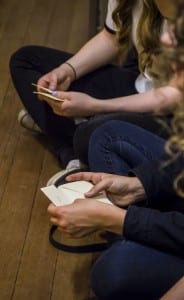

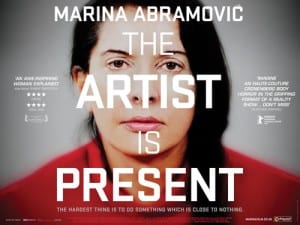
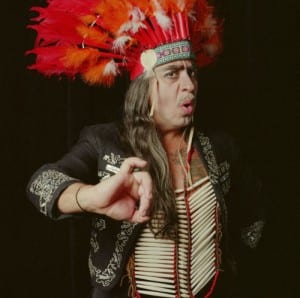
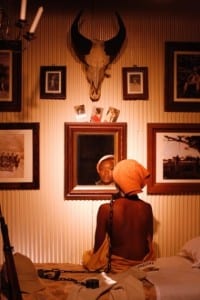





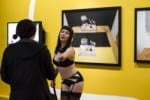
Recent Comments